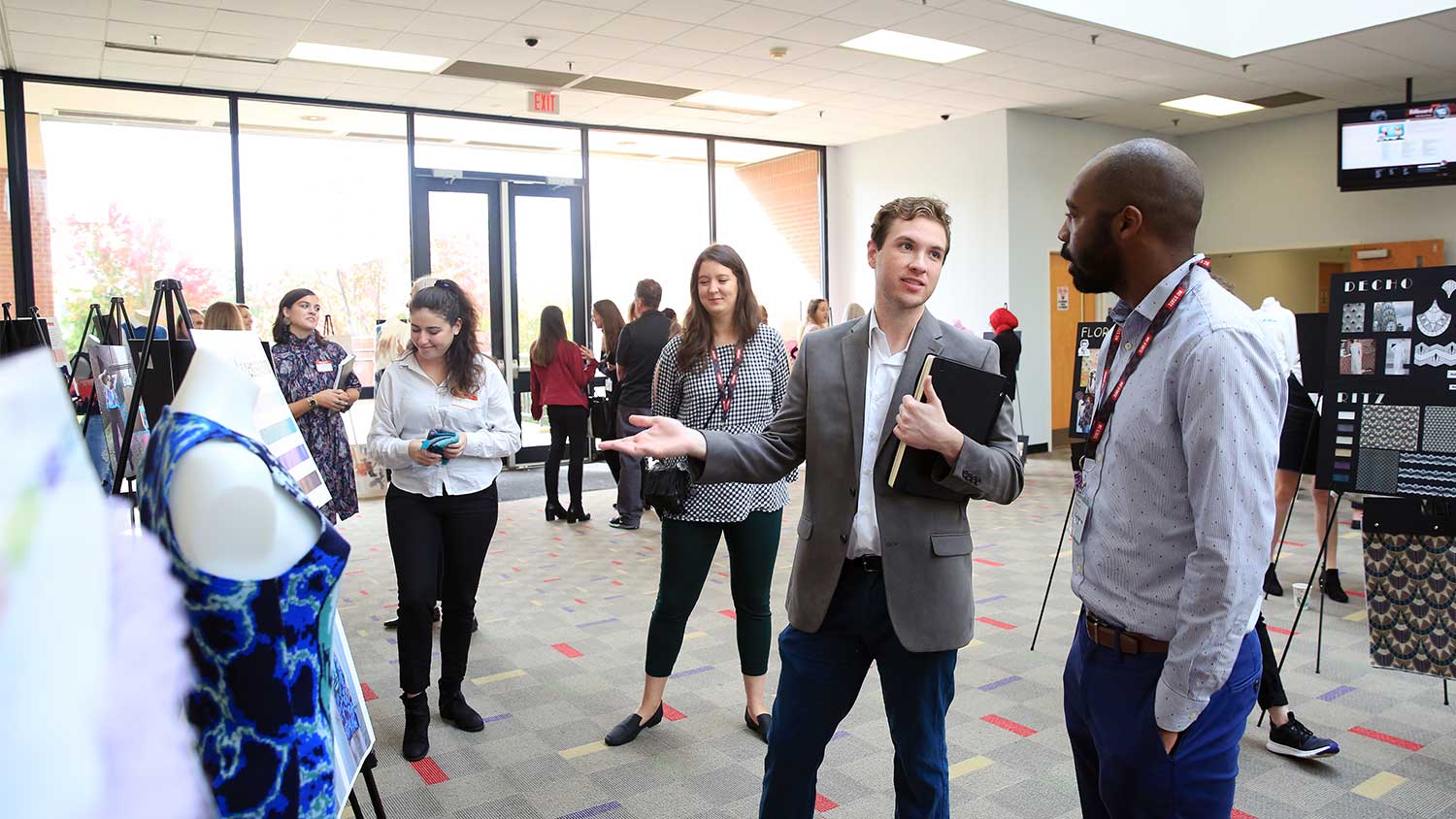A Sustainable Future For Cotton

Over the next few decades, global population will propel to 9 billion people and counting. What then will it take to clothe the world in a sustainable way?
Industry experts in textile sustainability addressed that question and more during the Cotton and Sustainability Symposium, which the Wilson College of Textiles hosted on Nov. 1.
“We, as an industry, provide a product that touches every single person on the planet,” said Mark Messura, Cotton Incorporated’s senior vice president for global supply chain marketing, in his keynote address. “That also means we draw the attention of the world.”
Increasingly, many textile companies and organizations have been working to reduce the industry’s impact on the planet. Cotton, which is grown in more than 75 countries and used by more than 100 countries in manufacturing, is just one area where textile sustainability advances are being made.
Best Practices
Through life cycle assessment, Cotton Incorporated has measured the entire environmental impact of a cotton garment, starting from the field where the cotton is grown to the manufacturing facility and finally to the consumer. This data helped Cotton Incorporated create sustainability goals, according to Jesse Daystar, an NC State graduate and the company’s vice president of sustainability.
Data also helps measure sustainability progress. For example, today’s cotton fields are harvested with equipment that also collects data. This data enables farmers to monitor production efficiency and manufacturers to trace supply chains.
“Producers can trace cotton down to which part of the field it came from,” said Ed Barnes, Cotton Incorporated’s senior director of agricultural and environmental research.
The most productive fields now feature sensors that optimize water and fertilizer use, as well as plants made more resilient and pest-resistant through biotechnology. Additionally, farmers are using cover crops, precision planting and crop rotation to sequester carbon and mitigate the impacts of flooding and droughts.
Educating Consumers
These best practices and technology advances are allowing companies such as Wrangler to better report environmental impacts of the cotton used in its products. According to Messura, this consumer education is vital to boosting the industry’s sustainability.
“Sustainability will never be easily captured through a scorecard or single number. It’s complex, and the goal line keeps moving. What’s important is the process of how we make decisions about sustainability,” he said. “Consumers will not pay more for sustainable textile products; they expect the industry to provide them.”
The event also featured student poster presentations about sustainability and displays of student-designed products utilizing cotton.
“Sustainability is something that is extremely important to our industry,” said Wilson College of Textiles Dean David Hinks. “These are major challenges to us but also major opportunities for us.”
This event was sponsored through a grant from the Importer support Program of the Cotton Board with supervision from Cotton Incorporated.
- Categories: